In this post, you’ll learn what Minimum Viable Products (MVPs) are and how they help entrepreneurs and companies test new ideas, products, and services. We’ll share ten examples of MVPs that turned into successful businesses and offer some tips about how to build your own MVP.
What is an MVP?
A minimum viable product (MVP) is the most basic version of a product or service that can be released for consumers. An MVP might be a product, an app, a landing page, or even a video with no working product at all.
What are some popular definitions of MVP?
As far as startup jargon goes, few terms are as widely misused and misunderstood as ‘MVP’. To cut through the confusion, it’s helpful to know who invented the phrase and find out what they meant by it. As noted by author and entrepreneur Steve Blank, the term ‘Minimum Viable Product’ was coined by Frank Robinson, CEO of SyncDev, Inc. in 2001. Robinson used MVP to described the “simplest version of a deployable product.”
The term proved hugely influential and was referenced in a number of popular books including The Start Owner’s Manual, the Business Model Canvas, and Eric Ries’ The Lean Startup. In fact, Eric Ries is widely credited with helping to popularize the term MVP.
The term was since clarified by Eric Karjaluoto who described MVPs as a way to “avoid making something people don’t want.” According to Karjaluoto, an MVP is best thought of as a “mid-stage prototype” that allows you to test out an idea and gain data from real users.
Why use an MVP?
MVPs help companies in a number of ways. At the most basic level, an MVP can help a company see whether their idea is of interest to people. MVPs can help entice early adopters and this generates feedback that can help inform future product development. MVPs can also produce revenue if people are willing to buy the product or service.
What are some myths surrounding MVPs?
As the term MVP is so widely misunderstood, there are plenty of myths around MVPs. Here are three of the most common MVP myths you may have heard.
Myth #1. An MVP must be a prototype
Some people think that MVPs must be a prototype. This isn’t necessarily true. Most MVPs are indeed fully working products that people can use or buy, but they don’t have to be. As we’ll show later in this post, some MVPs are simple landing pages or videos of a product or service that doesn’t yet exist. For example, DropBox’s MVP was an explainer video that was released before any of the hardware, software or infrastructure was even built!
Myth #2. MVPs are quick and dirty versions of eventual products
Many people believe that MVPs are just low-quality versions of an app, website or product. They aren’t. An MVP has to demonstrate enough future benefits to attract and retain early adopters. If it is low quality, the idea likely won’t catch on. In fact, releasing a low-quality MVP can hurt the chances of an idea or concept being adopted and catching on.
Myth #3. MVPs purpose is to help gain an initial user base
Some people think that MVPs are just a way to gain an initial user base. In fact, the purpose of an MVP is to help create a feedback loop that guides the developers. Using an MVP is a development technique best applied for technically oriented products. It helps reduce build time and lets developed work with fewer resources.
So, what are the most popular ways of building an MVP?
An MVP could be:
[eckosc_column_container count=”five” align=”center”]
[eckosc_column_item]
Landing Page

[/eckosc_column_item]
[eckosc_column_item]
Web Page

[/eckosc_column_item]
[eckosc_column_item]
App

[/eckosc_column_item]
[eckosc_column_item]
Program

[/eckosc_column_item]
[eckosc_column_item]
Physical Product

[/eckosc_column_item]
[/eckosc_column_container]
10 MVPs that turned into big businesses
Are you interested in understanding what to focus on when developing an MPV? If so, here are 10 examples of minimum viable products that went on to become successful businesses.
#1. Dropbox
When Arash Ferdowsi and Drew Houston came up with their idea for a cloud-based file-syncing service, they realized that trying to build the actual hardware infrastructure would be incredibly time-consuming and expensive. So they didn’t!
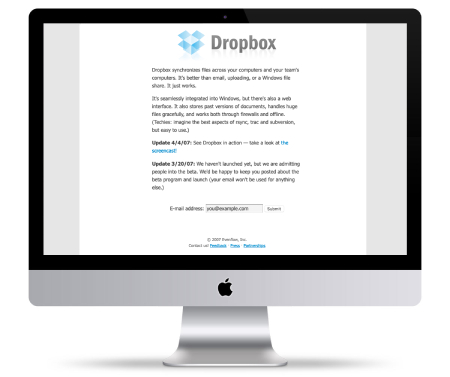 Most entrepreneurs would have started building an app and investing in hardware, but Ferdowsi and Houston were smarter than that. Their MVP was nothing more than a simple explainer video showing how Dropbox would work; none of the service was actually built yet. The video was hugely successful and encouraged over 70,000 signups from people interested in learning more. This one simple video let Dropbox’s founders test the biggest risk facing their business – ie. would anyone actually want it – very quickly and cheaply.
Most entrepreneurs would have started building an app and investing in hardware, but Ferdowsi and Houston were smarter than that. Their MVP was nothing more than a simple explainer video showing how Dropbox would work; none of the service was actually built yet. The video was hugely successful and encouraged over 70,000 signups from people interested in learning more. This one simple video let Dropbox’s founders test the biggest risk facing their business – ie. would anyone actually want it – very quickly and cheaply.
#2. Zappos
In 1999, Nick Swinmurn felt there might be a market for selling shoes online. But whereas most entrepreneurs would get caught up with building a fully-functioning e-commerce store, buying inventory and signing up delivery partners, Swinmurn did something smart.
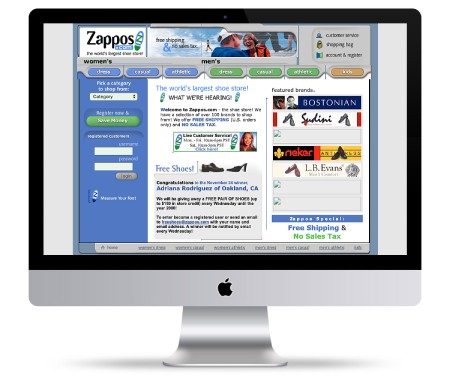 He realized that most startups burn through cash and get killed before they are even able to test their ideas out. So, Swinmurn registered Shoesite.com and went into business without any stock or inventory! He simply took photos of the shoes he wanted to sell and if a customer placed an order from his site, he would buy the shoes from a conventional store and ship them. This gave him a low-risk way of testing his idea without having to tie up cash in inventory. Shoesite.com developed into Zappos and was snapped up by Amazon in 2009 for a cool $1.2 billion. Not bad for a company that started with zero inventory, right?
He realized that most startups burn through cash and get killed before they are even able to test their ideas out. So, Swinmurn registered Shoesite.com and went into business without any stock or inventory! He simply took photos of the shoes he wanted to sell and if a customer placed an order from his site, he would buy the shoes from a conventional store and ship them. This gave him a low-risk way of testing his idea without having to tie up cash in inventory. Shoesite.com developed into Zappos and was snapped up by Amazon in 2009 for a cool $1.2 billion. Not bad for a company that started with zero inventory, right?
#3. Groupon
Back in the late 1990s, coupons and discount vouchers were all the rage and Groupon’s original idea was to make it easier for people to find the best deals. Their concept was simple; they threw up a simple website and if visitors wanted to get their hands on some coupons, they subscribed and Groupon emailed them a range of coupons in PDF format.
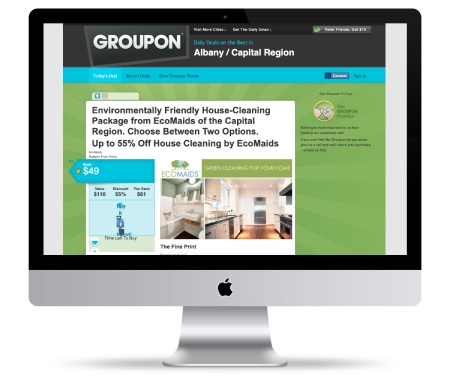 Whereas most startups would have plowed time and capital into building out a fancy website and signing deals with retailers, Groupon did something smart. They threw up a simple WordPress website and quickly amassed a huge email list of engaged customers. Groupon’s initial website is one of the best minimum viable product examples for entrepreneurs looking to test the waters with the least amount of fuss. Groupon parlayed these leads into revenue and used that cash to gradually build out its backend and voucher system. Groupon’s 2011 initial public offering (IPO) was the biggest by a U.S. company since Google. Pretty cool for a company that started on WordPress!
Whereas most startups would have plowed time and capital into building out a fancy website and signing deals with retailers, Groupon did something smart. They threw up a simple WordPress website and quickly amassed a huge email list of engaged customers. Groupon’s initial website is one of the best minimum viable product examples for entrepreneurs looking to test the waters with the least amount of fuss. Groupon parlayed these leads into revenue and used that cash to gradually build out its backend and voucher system. Groupon’s 2011 initial public offering (IPO) was the biggest by a U.S. company since Google. Pretty cool for a company that started on WordPress!
#4. Twitter
When Apple released iTunes in 2001, podcasting business Odeo knew they were in for a rough ride. Their entire business model was under threat, and they knew they couldn’t compete. While other podcasting companies doubled down and threw good money after bad trying to build their market share, Odeo thought outside the box and started running hackathons.
 Odeo knew that trying to fend off Apple was fighting a losing battle. So they used hackathons to generate new ideas, one of which was a cool SMS messaging service called ‘Twttr’.
Odeo knew that trying to fend off Apple was fighting a losing battle. So they used hackathons to generate new ideas, one of which was a cool SMS messaging service called ‘Twttr’.
Initially, this idea was only used internally by Odeo employees. It wasn’t long before Odeo’s employees were spending significant amounts of their own money posting on the platform and Odeo realized they had a hit on their hands. ‘Twttr’ helped Odeo pivot to become ‘Twitter’ and quickly scaled to become the phenomenon we know and love today.
#5. Amazon
As an investment banker, Jeff Bezos saw the rise of the internet and came up with the idea of selling books online. While most entrepreneurs would have sunk money into a fully functioning e-commerce store, Bezos did something smart. He realized that unless he operated frugally, he’d never get to properly test his idea and wind up wasting a ton of cash on an idea that no-one wanted. So, he moved back home with his parents and built a simple website.
 Despite its rudimentary design, the original Amazon website helped to prove that selling books online at low prices was a winning idea. According to Peter H. Diamandis and Steven Kotler, the authors of BOLD, many of Amazon’s early orders were actually Bezos’ friends and family. In fact, his idea would have died long before it took off if he hadn’t acted so frugally.
Despite its rudimentary design, the original Amazon website helped to prove that selling books online at low prices was a winning idea. According to Peter H. Diamandis and Steven Kotler, the authors of BOLD, many of Amazon’s early orders were actually Bezos’ friends and family. In fact, his idea would have died long before it took off if he hadn’t acted so frugally.
In its early days, the company had a buzzer set up that would ring whenever an order was placed. Initially, the staff would cheer when they heard the sound, but as sales picked up, the buzzer became so frequent that they had to disconnect it!
#6. Uber
In 2008, Garrett Camp and Travis Kalanick were frustrated by the high price of cabs in San Francisco and the lack of affordable alternatives. Their original idea was to pair drivers who were will to take passengers with people who wanted a ride. At this point, most entrepreneurs would have embarked on a frenzy of app-building and website-designing. But Camp and Kalanick were clever: they realized that if they started scaling too quickly, their idea would get killed before it ever got off the ground.
 When it launched in 2009, the MVP app ‘UberCab’ only worked on iPhones or via SMS and was only available in San Francisco. However, this app helped Camp and Kalanick prove that their original ride-sharing idea had a market. Their MVP helped them test the largest risk facing their business at very little cost. Data from the app helped Uber scale and swiftly become one of the most highly valued comp-anies in Silicon Valley.
When it launched in 2009, the MVP app ‘UberCab’ only worked on iPhones or via SMS and was only available in San Francisco. However, this app helped Camp and Kalanick prove that their original ride-sharing idea had a market. Their MVP helped them test the largest risk facing their business at very little cost. Data from the app helped Uber scale and swiftly become one of the most highly valued comp-anies in Silicon Valley.
#7. Facebook
In 2003, Harvard University students Mark Zuckerberg and Eduardo Saverin came up with a simple concept: what if they could build a way for people to share connections and experience with friends and family? When ‘TheFacebook’ launched in 2004, it was only available to fellow Harvard students, offering a sense of exclusivity that wasn’t available elsewhere.
 This approach let Zuckerberg and Saverin avoid the pitfalls that other social media networks fell into such as spending too much on development, scaling too fast and not giving users what they wanted. TheFacebook was gradually rolled it out across other U.S. colleges and eventually worldwide. This helped the idea gain traction and scale efficiently until it became the dominant social network that we know today.
This approach let Zuckerberg and Saverin avoid the pitfalls that other social media networks fell into such as spending too much on development, scaling too fast and not giving users what they wanted. TheFacebook was gradually rolled it out across other U.S. colleges and eventually worldwide. This helped the idea gain traction and scale efficiently until it became the dominant social network that we know today.
#8. Etsy
As Etsy founder Rob Kalin tells it, the idea for Etsy came to him when he needed a way to sell his wooden-cased computers. However, according to David Lifson, formerly head of Etsy’s product management team, the idea started in 2005 when Kalin, Chris Maguire, Jared Tarbell, and Haim Schoppik were working as freelance website builders for a crafting community forum. After members kept complaining that eBay’s fees were too high and it was difficult to use, the founders came up with the idea for Etsy.
 At the time, eBay-like websites were ten a penny and most online marketplace websites failed. Most startups either couldn’t test their idea before running out of cash or wound up wasting a lot of money before realizing that customers weren’t interested. So why did Etsy succeed?
At the time, eBay-like websites were ten a penny and most online marketplace websites failed. Most startups either couldn’t test their idea before running out of cash or wound up wasting a lot of money before realizing that customers weren’t interested. So why did Etsy succeed?
Kalin did something smart and created a simple MVP website that let anyone register and sell things they had produced themselves. Almost overnight, thousands of sellers joined and started selling, despite Etsy’s rudimentary design and functionality. This approach let Kalin test his idea quickly and cheaply, before using the revenue to start improving and scaling his site.
#9. Airbnb
In 2008, Brian Chesky and Joe Gebbia were struggling to pay the exorbitant rent on their San Francisco loft apartment. Their original idea was to see whether there was a market for people who wanted to rent out their homes. Instead of following a traditional entrepreneurial route of building a fully functional website and signing agreements with partners and homeowners, Chesky and Gebbia did something pretty bright. They created a simple MVP that was nothing more than a basic website showing photos of their own apartment!
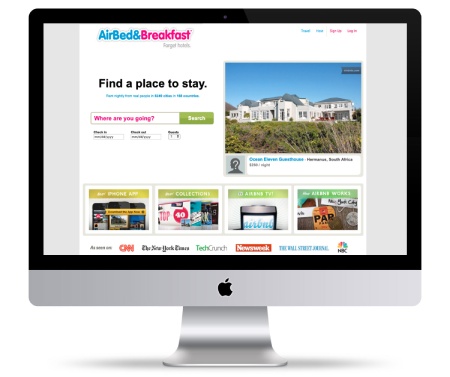 This gave them a way of testing out their idea quickly without any upfront costs. They discovered that they were able to rent out rooms to people who were attending nearby conferences. After notching up three paying guests, Chesky and Gebbia founded Airbnb in 2008 and gradually used their revenue to start improving their website’s design and functionality.
This gave them a way of testing out their idea quickly without any upfront costs. They discovered that they were able to rent out rooms to people who were attending nearby conferences. After notching up three paying guests, Chesky and Gebbia founded Airbnb in 2008 and gradually used their revenue to start improving their website’s design and functionality.
#10. Spotify
Back in 2006, the music industry was facing a huge challenge: file sharing sites such as The Pirate Bay and LimeWire meant that fewer people than ever were paying for music. Daniel Ek and Martin Lorentzon realized that legislation would never work, so their original idea was to create a free music streaming service and use ads to generate revenue. Many similar music streaming services were launched around this time, so why did they get killed while Spotify went on to become worth $23 billion?
 Ek and Lorentzon realized that most music streaming startups were plowing cash into flashy websites and apps without even testing their idea first. They burned through funds before realizing that customers didn’t want what they were offering. So Ek and Lorentzon did something astute: they created an MVP in the form of a desktop app that offered one core feature: music streaming. They later added the option for customers to pay a monthly fee to get an ad-free experience. This route let them try out their idea while keeping their investments in check.
Ek and Lorentzon realized that most music streaming startups were plowing cash into flashy websites and apps without even testing their idea first. They burned through funds before realizing that customers didn’t want what they were offering. So Ek and Lorentzon did something astute: they created an MVP in the form of a desktop app that offered one core feature: music streaming. They later added the option for customers to pay a monthly fee to get an ad-free experience. This route let them try out their idea while keeping their investments in check.
Spotify’s MVP was initially run on a closed beta to test the market and keep costs to a minimum. This approach confirmed that Spotify’s idea could succeed and the service built on its initial success to quickly sign up artists, develop a mobile app and scale up.
How to go about building your own MVP
As our MVP (Minimum Viable Product) examples have shown, the MVP development approach is best suited to technical products such as online services, apps, or websites. Here is a six-step guide to building your own MVP.
Step 1: Market research
Market research helps you identify your target users and develop an idea that fulfills their needs. Many of the example MVPs on our list were created by people who were trying to satisfy their own needs, so their market research was anecdotal, rather than conducted by a professional firm.
For example:
- Airbnb founders Brian Chesky and Joe Gebbia needed help paying their rent.
- Etsy founder Rob Kalin needed somewhere to sell the wooden-cased computers he was making.
- Twitter’s creator Odeo needed to innovate after Apple launched iTunes.
Step 2: Outline your idea
An MVP isn’t an MVP is no-one will buy it. You must outline how your product will provide value to customers. Why would they buy it? What value does it offer them?
For instance:
- Dropbox founders Arash Ferdowsi and Drew Houston created an explainer video before building any of Dropbox’s infrastructure. This helped them gauge peoples’ interest and figure out how to offer them value.
Step 3: Consider the design process from the user’s perspective
Imagine you are the end-user of your proposed product or service. What would you expect to see? How would you expect it to work? Always place user satisfaction at the forefront of your mind. Then move on to defining the process stages from there.
Step 4: Identify the project features
After deciding upon a design process, you’ll likely have many features that can’t be completed or included in the MVP. You need to prioritize them and identify which features will be part of your project. As you saw with our MVP examples, Spotify focused on the single core feature of streaming music and added other features later on.
Step 5: Build
Always aim to keep the build quality no lower than that of a final product. An MVP isn’t a prototype: it needs to fulfill people’s’ needs and offer them real value. Prioritize ease-of-use, suitability, and intuitiveness as you build.
Step 6: BML: Build, measure, learn
The purpose of an MVP is to gather data that helps inform the development progress. For a software MVP, the steps involved would be gathering user feedback, identifying demands for new features and fixing bugs and errors.
Are you looking to get your MVP built? Contact us at hello@devathon.com or visit our website Devathon to find out how we can breathe life into your vision with beautiful designs, quality development, and continuous testing.


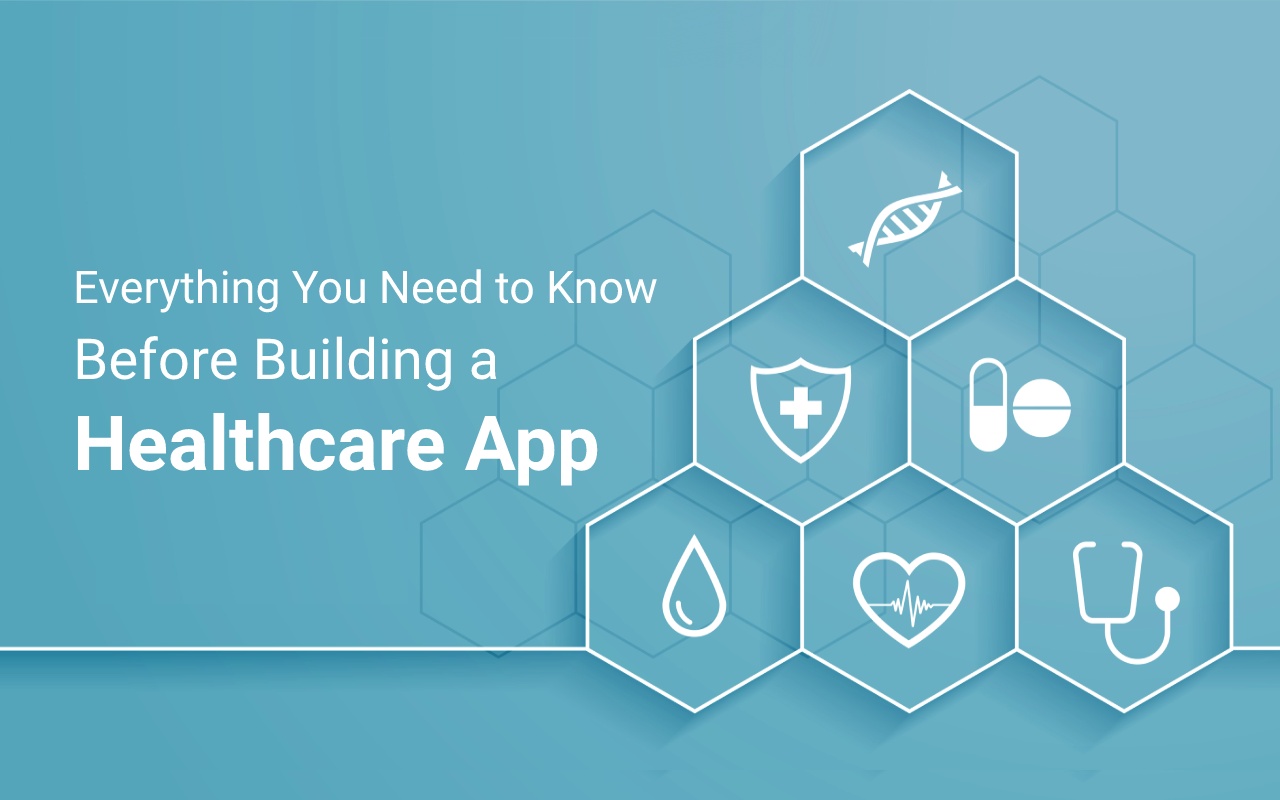


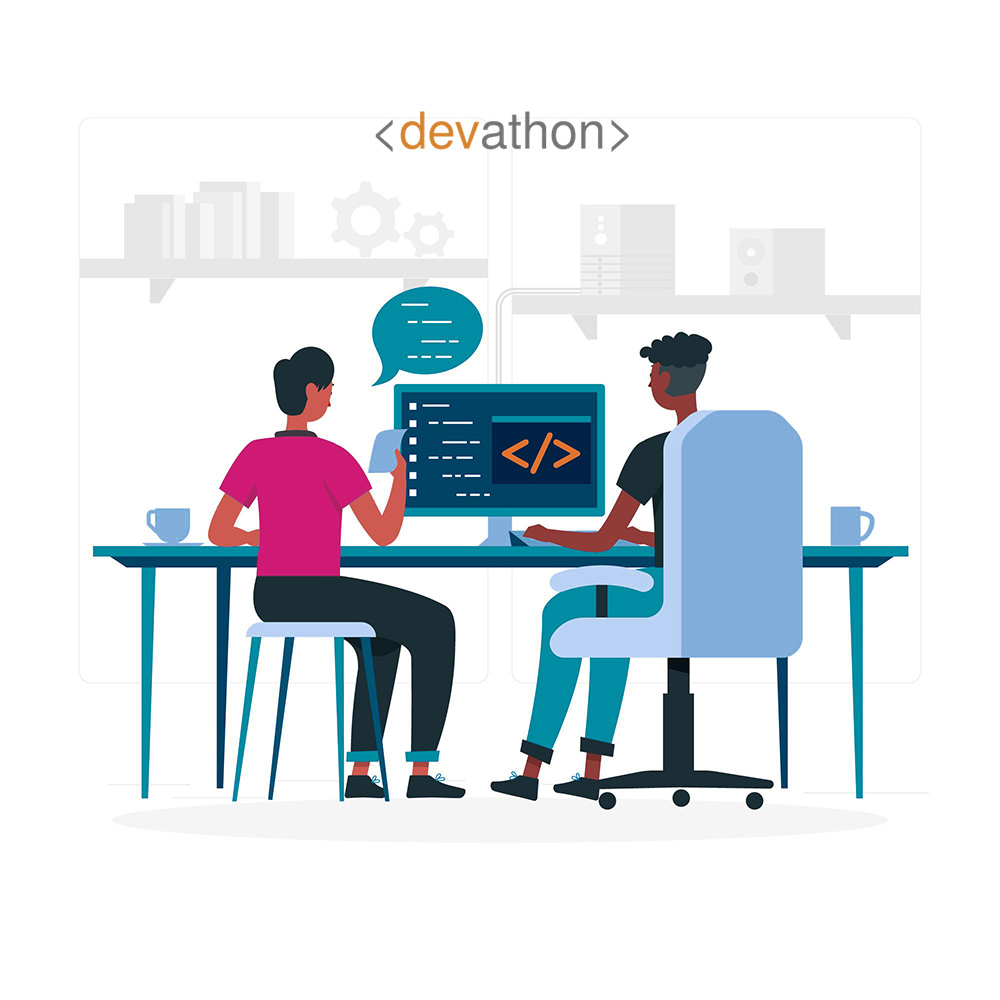
Another Informative article from Devathon, Great job!